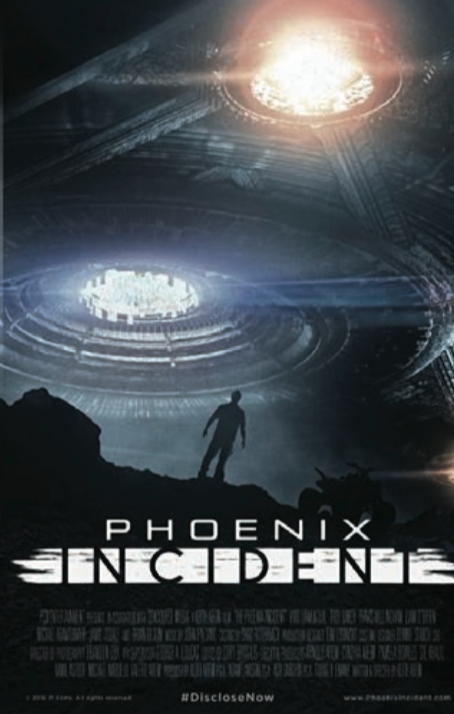The second incident, described as "a row of brilliant lights hovering in the sky, or slowly falling" began at approximately 10:00 pm, and was due to a flare drop exercise by different A-10 jets from the
Maryland Air National Guard, also operating out of Davis-Monthan AFB as part of from Operation Snowbird.
[5] The
U.S. Air Force explained the exercise as utilizing slow-falling, long-burning LUU-2B/B illumination
flares dropped by a flight of four A-10 aircraft on a training exercise at the
Barry M. Goldwater Air Force Range in western
Pima County, Arizona. The flares would have been visible in Phoenix and appeared to hover due to rising heat from the burning flares creating a "balloon" effect on their parachutes, which slowed the descent.
[11] The lights then appeared to wink out as they fell behind the
Sierra Estrella mountain range to the southwest of Phoenix.
[12] The lights likely appeared to block out background stars because of their brightness, making it harder to see dim objects like stars in the areas they laid out.
[12]
A Maryland ANG pilot, Lt. Col. Ed Jones, responding to a March 2007 media query, confirmed that he had flown one of the aircraft in the formation that dropped flares on the night in question.
[11] The squadron to which he belonged was at Davis-Monthan AFB on a training exercise at the time, and flew training
sorties to the Goldwater Air Force Range on the night in question, according to the Maryland ANG. A history of the Maryland ANG published in 2000 asserted that the squadron, the
104th Fighter Squadron, was responsible for the incident.
[13] The first reports that members of the Maryland ANG were responsible for the incident were published in
The Arizona Republic in July 1997.
Later comparisons with known military flare drops were reported on local television stations, showing similarities between the known military flare drops and the Phoenix Lights.
[6] An analysis of the luminosity of LUU-2B/B illumination flares, the type which would have been in use by A-10 aircraft at the time, determined that the luminosity of such flares at a range of approximately 50–70 miles (80–113 km) would fall well within the range of the lights viewed from Phoenix.





